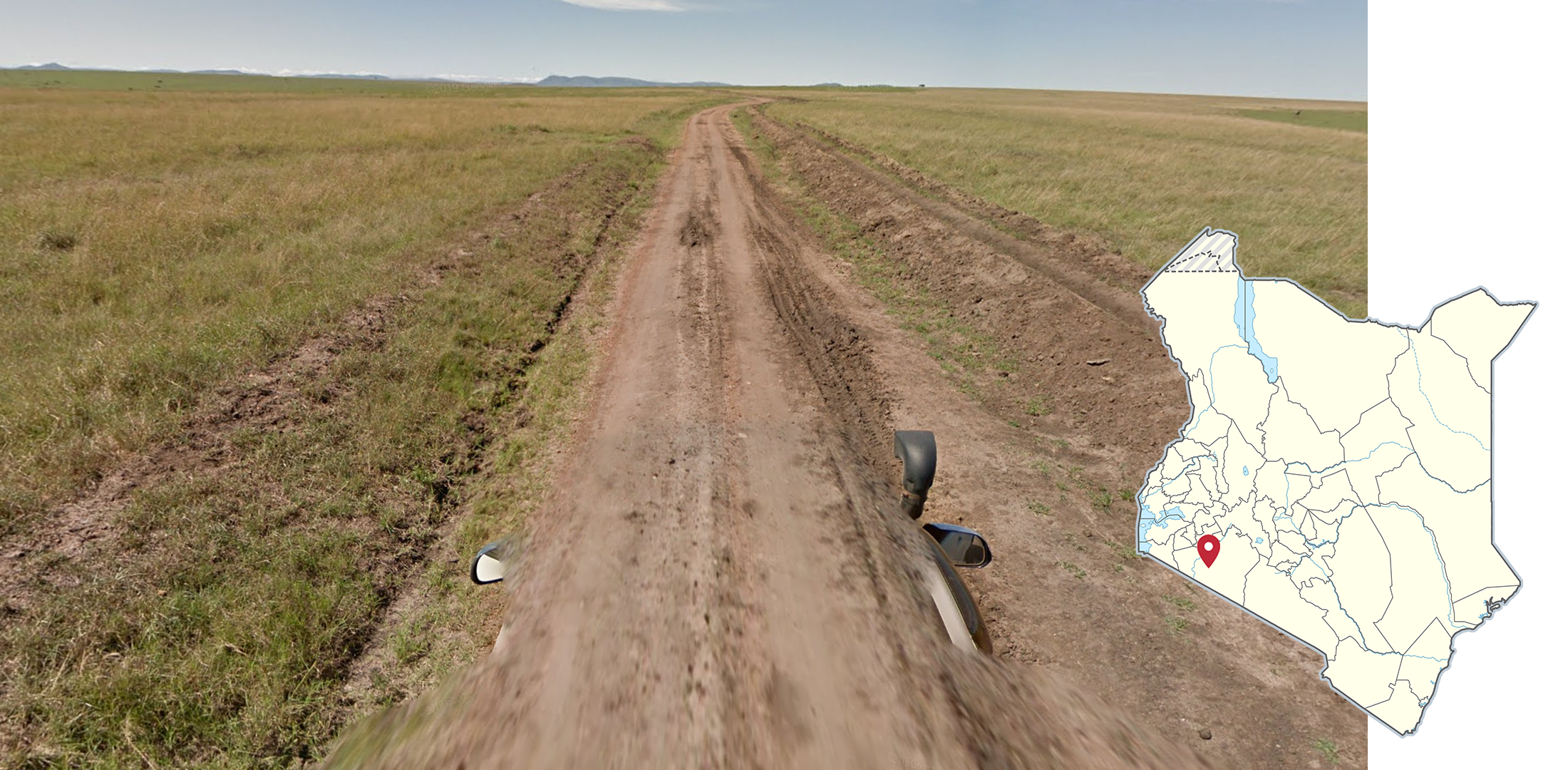
Kenya
Kenya has many unique Google cars, almost all of which will have visible car meta. In Generation 3 you will typically see a car with a roof rack and a snorkel. In Generation 4 you will always have a large pickup truck, which will either be white or grey. The grey car comes in two slightly different variations, of which one can either be with or without a snorkel.
It is the only country other than Mongolia with a snorkel.
NOTE: You can see National Park Cars in other countries with a snorkel on the front of the vehicle. Each vehicle will have its own distinct look.
Directional signs are green with a white border and text. They often display road numbers in white or yellow.
These repurposed vans can be found all over Kenya.
NOTE: While these vans can also be found in Uganda, the design of the vehicle wrap is clearly different.
Kenya has mostly Generation 4 coverage covered by a large grey Google car, with or without a snorkel. There are many metas regarding Generation 4, too many in fact to break down here.
RESOURCE: Therefore, please use this document. It covers this area in depth, and was created by snowf_lake#9088.
Key meta information can be found in the tips below. Other less extensive, but still noteworthy car meta, can be found in the spotlight section.
The A109 between Mombasa and Nairobi has light orange dirt and many hills around the road and in the distance. You will additionally see many transportation trucks delivering various goods.
Most of the coverage between Mombasa and Emali also has a unique car, which has a cord on the left.
Kenya has many unique Google cars in and around its National Parks and Reserves. These are still identifiable by the snorkel which is present in almost all of them.
Many of the National Park and Reserve cars must be used in conjunction with landscape, as they can be found in multiple areas.
You can learn more about these National Parks and Reserves in the spotlight section.
In a lot of the coverage north of Mt Kilimanjaro, the mountain is visible to the south, usually obscured by clouds. In the city of Oloitoktok, the mountain will often be visible directly to the south.
NOTE: The map shows the location of Mt Kilimanjaro, but it can be seen from very far away.
Mara Triangle has no considerable mountains and most of it is either flat or hilly. It has a white car that can be found in other Kenyan National Parks. Generation 4 coverage exists there as well.
Aberdare National Park has a grey and brown car that features a large snorkel. Almost all of the coverage is outside of the National Park, with only two roads within the park covered. The main road through the park has these rubber bands on the roof rack, which can only be found in one other National Park in Kenya.
The area surrounding and between Kerio and Lodwar uses the same car as the Aberdare National Park, but with a vastly different landscape. It is very sandy, dry, and has little vegetation.
You may also find yourself in Generation 3 coverage without car meta.
GeoGuessr’s own official maps are not very good, for a variety of reasons. Plonk It recommends you play these maps instead:
A Balanced Kenya (map link) - A well balanced, computer generated map of Kenya with over 50,000 locations.








































